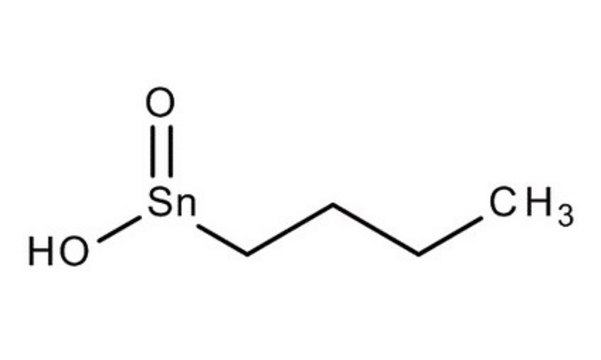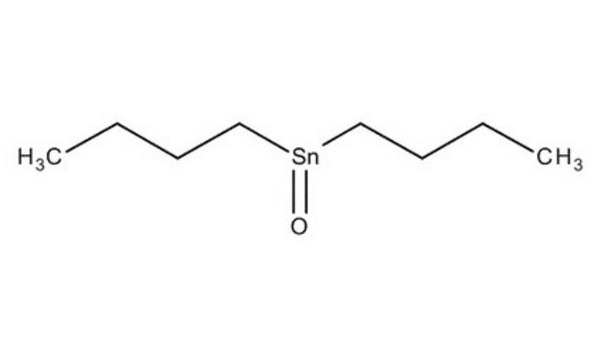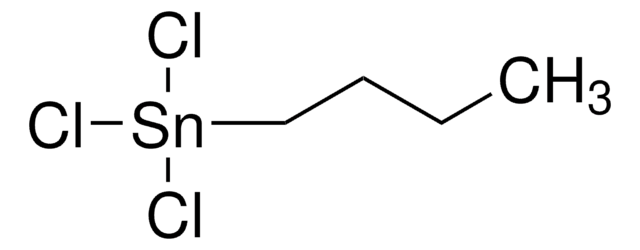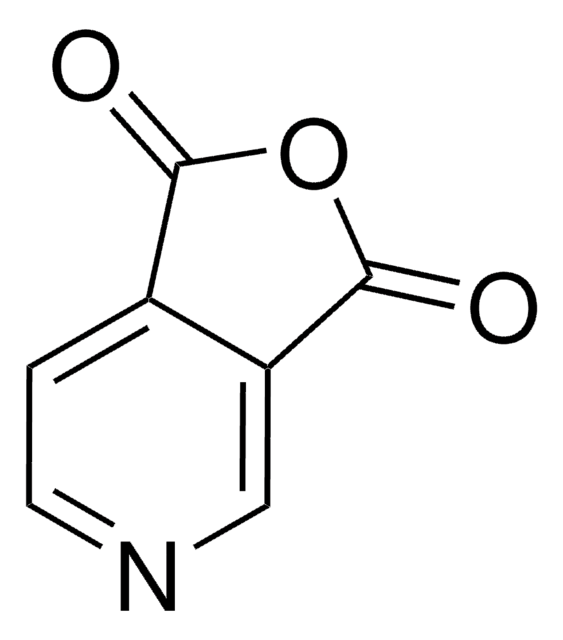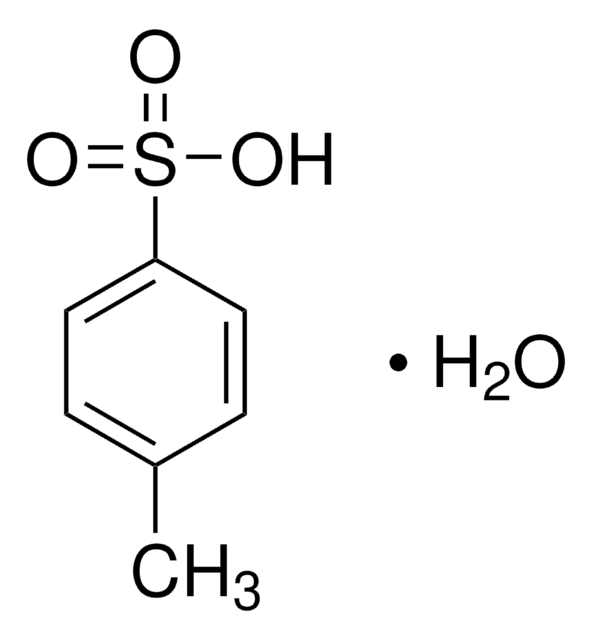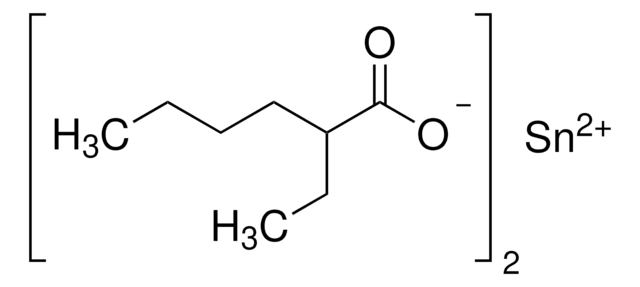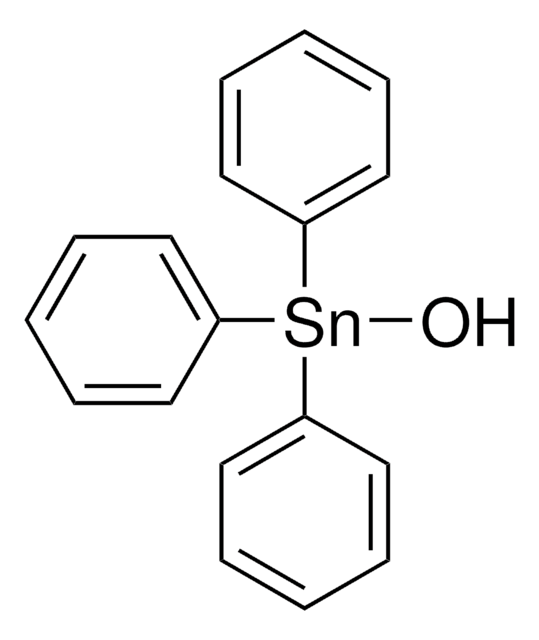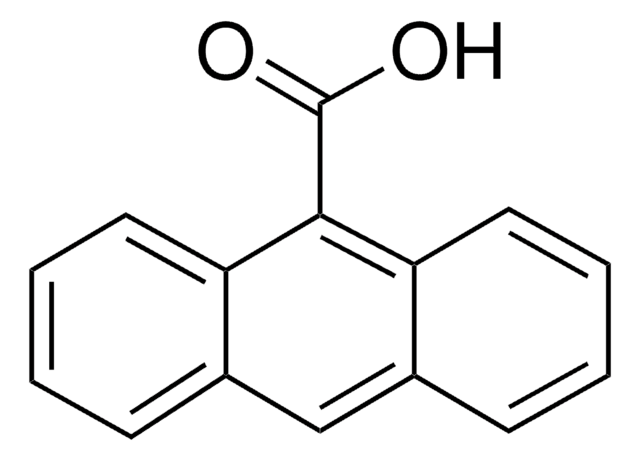All Photos(1)
Synonym(s):
Butylhydroxyoxostannane
Linear Formula:
CH3(CH2)3Sn(=O)OH·xH2O
CAS Number:
Molecular Weight:
208.83 (anhydrous basis)
MDL number:
UNSPSC Code:
12352103
PubChem Substance ID:
NACRES:
NA.22
Recommended Products
Assay
97%
SMILES string
O.CCCC[Sn](O)=O
InChI
1S/C4H9.2H2O.O.Sn/c1-3-4-2;;;;/h1,3-4H2,2H3;2*1H2;;/q;;;;+1/p-1
InChI key
KBNBFLVBJDYEFE-UHFFFAOYSA-M
Application
Butyltin hydroxide oxide hydrate can be used:
- As a starting material for the preparation of 1,3,2-oxathiastannolane derivatives.
- To prepare polyethylene oxide (PEO) ionomer i.e, PEO600/sulphoisophthalate Na ionomer.
- To prepare sulfonated copolyester (SPE) polymers.
WGK
WGK 3
Flash Point(F)
Not applicable
Flash Point(C)
Not applicable
Personal Protective Equipment
dust mask type N95 (US), Eyeshields, Gloves
Regulatory Information
新产品
Certificates of Analysis (COA)
Search for Certificates of Analysis (COA) by entering the products Lot/Batch Number. Lot and Batch Numbers can be found on a product’s label following the words ‘Lot’ or ‘Batch’.
Already Own This Product?
Find documentation for the products that you have recently purchased in the Document Library.
Silica nanoparticles densely grafted with PEO for ionomer plasticization
O'Reilly MV and Winey KI
Royal Society of Chemistry Advances, 5(25), 19570-19580 (2015)
Dimeric dithiocarbamates of stannolane. An example of the presence of secondary bonds in the formation of an inorganic ring. Molecular and crystal structure of 2-nbutyl-2-(dimethyldithiocarbamate)-1, 3, 2-oxathiastannolane and 2-nbutyl-2-(piperidyldithioca
Gomez-Ortiz LA, et al.
Journal of Organometallic Chemistry, 654(1-2), 51-55 (2002)
A facile preparation of microparticles from sulfonated polyester nanoparticles via emulsion-aggregation process
Subramani S, et al.
Colloids and Surfaces. A, Physicochemical and Engineering Aspects, 340(1-3), 40-49 (2009)
David W Sanders et al.
eLife, 10 (2021-04-24)
Many enveloped viruses induce multinucleated cells (syncytia), reflective of membrane fusion events caused by the same machinery that underlies viral entry. These syncytia are thought to facilitate replication and evasion of the host immune response. Here, we report that co-culture
Our team of scientists has experience in all areas of research including Life Science, Material Science, Chemical Synthesis, Chromatography, Analytical and many others.
Contact Technical Service